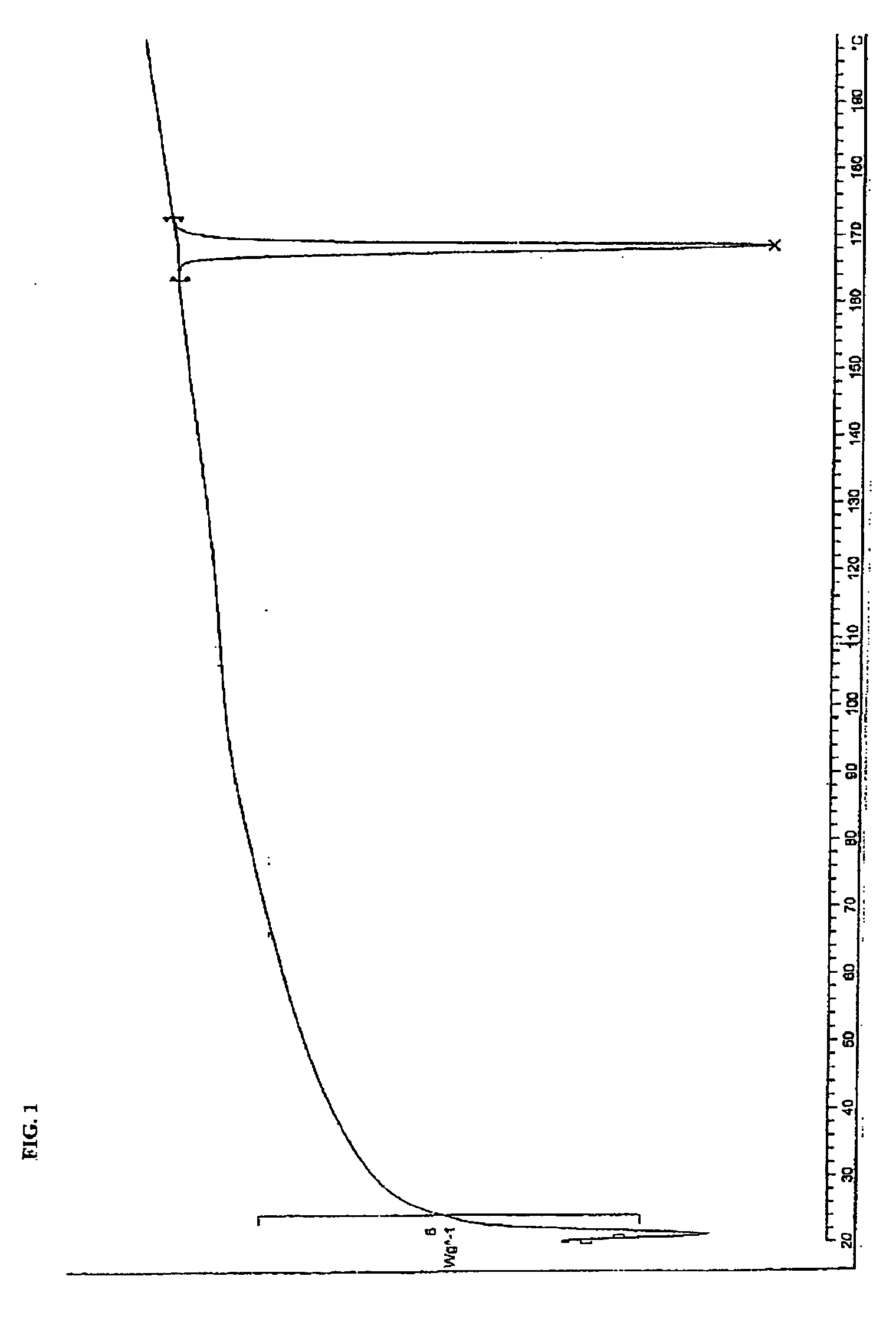Process for the preparation of atorvastatin and intermediates
a technology which is applied in the field of process for the preparation of atorvastatin and intermediates, can solve the problems of harmful side reactions, serious deficiencies, flammability and corrosion, etc., and achieve the desired r,s-diastereomer yield, the effect of improving the stereoselectivity of the aldol reaction and improving the stereoselectivity
- Summary
- Abstract
- Description
- Claims
- Application Information
AI Technical Summary
Benefits of technology
Problems solved by technology
Method used
Image
Examples
example 1
Preparation of (R)-5-[2-(4-fluorophenyl)-5-(1-methylethyl)-3-phenyl-4-[(phenylamino)carbonyl]-1H-pyrrol-1-yl]-3-hydroxy-1-pentanoic acid, (S)-2-hydroxy-1,2,2-triphenylethyl ester 2
[0055]
To a suspension of S-(−)-2-Hydroxy-1,2,2-triphenylethyl acetate (40.2 g) in 300 mL anhydrous THF at −10 to 0° C. was added a solution of LDA prepared by reaction of diisopropylamine (46.5 mL) with 2.5 M n-BuLi / hexanes (97 mL) in 300 mL anhydrous THF at −5 to 0° C. After stirring at 0° C. for 30 min the mixture was cooled to −78° C. Then, a solution of 5-(4-fluorophenyl)-2-(1-methylethyl)-1-(3-oxopropyl)-N,4-diphenyl-1H-pyrrole-3-carboxamide 1 (50 g) in 280 mL anhydrous THF was added dropwise and maintained at −78° C. for 30 min. After adding 25 mL AcOH and 250 mL water the mixture was allowed to warm to room temperature. The layers were separated and the organic layer was washed and dried. After evaporation of the solvent the crude product was obtained (94 g). Analytical data are consistent with tha...
example 2
Preparation of 5-[2-(4-fluorophenyl)-5-(1-methylethyl)-3-phenyl-4-[(phenylamino)carbonyl]-1H-pyrrol-1-yl]-3-hydroxy-1-pentanoic acid methylbenzylamine salt
[0057]
To a suspension of S-(−)-2-Hydroxy-1,2,2-triphenylethyl acetate (40.2 g) in 250 mL anhydrous 1,2-dimethoxyethane at −10 to 0° C. was added a solution of LDA prepared by reaction of diisopropylamine (46.5 mL) with 2.5 M n-BuLi / hexanes (97 mL) in 300 mL anhydrous THF at −5 to 0° C. After stirring at 0° C. for 30 min the mixture was cooled to −78° C. Then, a solution of 5-(4-fluorophenyl)-2-(1-methylethyl)-1-(3-oxopropyl)-N,4-diphenyl-1H-pyrrole-3-carboxamide (50 g) in 250 mL anhydrous 1,2-dimethoxyethane was added dropwise and maintained at −78° C. for 30 min. At this point a sample was taken and treated as EXAMPLE 1 and HPLC showed 2a:2b 95:5. After adding 100 mL MeOH, followed by 100 mL water the mixture was allowed to warm to room temperature then refluxed for 3 hours. After adding 700 mL water the mixture was evaporated ...
example 3
[0060]
A suspension of 7-methylbenzylamine salt (52 g, R,S: S,S, 97.8:2.2) in 200 mL MTBE and 150 mL MeOH was heated to reflux and maintained for 14 hours. After cooling to room temperature the product (R)-7-methylbenzylamine salt was isolated by filtering, washing with MeOH / MTBE (2:1) and drying (46 g). The analytical data are consistent with the assigned structure.
[0061] Chiral HPLC: >99:1 (R,S / S,S)
PUM
| Property | Measurement | Unit |
|---|---|---|
| temperature | aaaaa | aaaaa |
| melting point | aaaaa | aaaaa |
| temperature | aaaaa | aaaaa |
Abstract
Description
Claims
Application Information
 Login to View More
Login to View More - R&D
- Intellectual Property
- Life Sciences
- Materials
- Tech Scout
- Unparalleled Data Quality
- Higher Quality Content
- 60% Fewer Hallucinations
Browse by: Latest US Patents, China's latest patents, Technical Efficacy Thesaurus, Application Domain, Technology Topic, Popular Technical Reports.
© 2025 PatSnap. All rights reserved.Legal|Privacy policy|Modern Slavery Act Transparency Statement|Sitemap|About US| Contact US: help@patsnap.com



